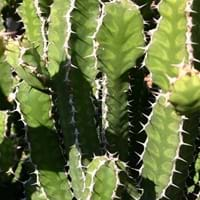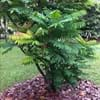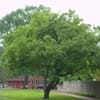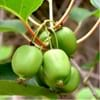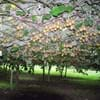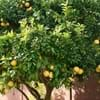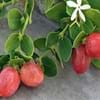What is
Life Span
Perennial
Perennial
Type
Flowering Plants, Herbs
Cactus, Shrub
Origin
Not Available
Southern Africa, South Africa
Types
Not Available
Not Available
Number of Varieties
2
99+
Not Available
Habitat
moist forests, Mountains
Bushlands, Upland savannas
USDA Hardiness Zone
4-9
10-15
AHS Heat Zone
9-2
Not Available
Sunset Zone
1a, 1b, 2a, 2b, 3a, 3b, 4, 5, 6, 7, 8, 9, 10, 11, 12, 13, 14, 15, 16, 17, 18, 19, 20
H1, H2, 13, 21, 22, 23, 24
Habit
Clump-Forming
Upright/Erect
Information
Plant Size
Minimum Height
38.10 cm
99+
30.00 cm
99+
Minimum Width
25.40 cm
99+
30.00 cm
99+
Plant Color
Flower Color
Purple, Pink, Lavender
Light Yellow, Yellow green, Gold
Flower Color Modifier
Bicolor
Not Available
Fruit Color
Brown
Not Available
Leaf Color in Spring
Green
Not Available
Leaf Color in Summer
Green
Not Available
Leaf Color in Fall
Green
Not Available
Leaf Color in Winter
Green
Not Available
Shape
Leaf Shape
Pinnate
Succulent
Thorns
No
Yes
Season
Plant Season
Spring, Summer
Spring, Summer, Fall, Winter
Growing Conditions
Sunlight
Full Sun
Full Sun, Partial Sun, Partial shade
Growth Rate
Fast
Medium
Type of Soil
Clay, Loam, Sand
Loam, Sand
The pH of Soil
Acidic, Neutral, Alkaline
Acidic, Neutral, Alkaline
Soil Drainage
Well drained
Well drained
Bloom Time
Late Spring, Summer
Spring, Late Spring
Repeat Bloomer
Yes
No
Tolerances
Drought, Salt
Drought
Care
Where to Plant?
Ground
Container, Ground, Pot
How to Plant?
Cuttings, Seedlings
Cuttings
Plant Maintenance
Medium
Medium
Watering Plants
Watering Requirements
Needs very little water
Needs very little water, occasional watering once established
In Summer
Lots of watering
Lots of watering
In Spring
Moderate
Moderate
In Winter
Average Water
Average Water
Soil
Soil pH
Acidic, Neutral, Alkaline
Acidic, Neutral, Alkaline
Soil Type
Clay, Loam, Sand
Loam, Sand
Soil Drainage Capacity
Well drained
Well drained
Sun Exposure
Full Sun
Full Sun, Partial Sun, Partial shade
Pruning
cut main trunk every 5 years, Prune after flowering, Prune central stem, Remove damaged leaves, Remove dead branches, Remove dead leaves
Remove damaged leaves, Remove dead branches, Remove dead leaves
Fertilizers
All-Purpose Liquid Fertilizer, Apply 5-10-5 amounts, Compost
All-Purpose Liquid Fertilizer
Pests and Diseases
Nematodes, Red blotch, Trunk Rot
Mealy bugs, Soft scales
Plant Tolerance
Drought
Drought
Facts
Flowers
Showy
Insignificant
Flower Petal Number
Single
Single
Fruits
Showy Fruit
No
No
Edible Fruit
No
No
Fragrance
Fragrant Flower
No
No
Fragrant Fruit
No
No
Fragrant Leaf
No
No
Fragrant Bark/Stem
No
No
Showy Foliage
No
No
Showy Bark
No
No
Foliage Texture
Medium
Bold
Foliage Sheen
Glossy
Not Available
Evergreen
No
No
Invasive
No
No
Self-Sowing
Yes
No
Attracts
Butterflies, Leaf Hoppers
pollinators
Allergy
Itchiness, Not Available, Sore Throat
Nausea, Skin irritation, Vomiting
Benefits
Uses
Aesthetic Uses
Beautification
Ground Cover
Beauty Benefits
Anti-ageing, Good Cleanser, Remove blemishes, Removes pimples
Not Available
Edible Uses
Yes
No
Environmental Uses
Air purification, Food for animals, Food for birds, soil stabilisation
Air purification
Plant Benefits
Medicinal Uses
Cough, Haemorrhages, Laxative, Obesity, Tonic
Asthma, Bronchitis, Diarrhea
Part of Plant Used
Fruits, Leaves
Sap
Other Uses
Added to salads, Can be boiled and seasoned, pickled, Culinary use
Container, useful as a ground cover
Used As Indoor Plant
No
Yes
Used As Outdoor Plant
Yes
Yes
Garden Design
Container, Cutflower, Mixed Border, Rock Garden / Wall, Wildflower
Container, Feature Plant, Houseplant, Rock Garden, Wall
Scientific Name
Botanical Name
Averrhoa bilimbi
Euphorbia pseudocactus
Common Name
Bilimbi, Mimbro
Tiger Tree
In Hindi
Bilimbi
टाइगर ट्री
In German
bilimbi
Tiger Tree
In French
bilimbi
Tiger Tree
In Spanish
bilimbi
Tiger Tree
In Greek
bilimbi
Tiger Tree
In Portuguese
bilimbi
Tiger Tree
In Polish
bilimbi
Tiger Tree
In Latin
Rondo Beardtongue
tigris lignum
Classification
Kingdom
Plantae
Plantae
Phylum
Magnoliophyta
Magnoliophyta
Class
Magnoliopsida
Magnoliopsida
Order
Oxalidales
Malpighiales
Family
Oxalidaceae
Euphorbiaceae
Genus
Averrhoa
Euphorbia
Clade
Angiosperms, Eudicots, Rosids
Angiosperms, Eudicots, Rosids
Tribe
Not Available
Euphorbieae
Subfamily
Not Available
Euphorbioideae
Number of Species
12
99+
2000
9
|
||
|
||
|

